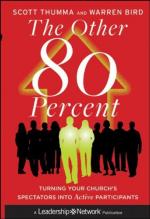But if the Description of what is Little, Common, or Deformed, be acceptable to the Imagination, the Description of what is Great, Surprising or Beautiful, is much more so; because here we are not only delighted with comparing the Representation with the Original, but are highly pleased with the Original itself. Most Readers, I believe, are more charmed with Milton’s Description of Paradise, than of Hell; they are both, perhaps, equally perfect in their Kind, but in the one the Brimstone and Sulphur are not so refreshing to the Imagination, as the Beds of Flowers and the Wilderness of Sweets in the other.
There is yet another Circumstance which recommends a Description more than all the rest, and that is if it represents to us such Objects as are apt to raise a secret Ferment in the Mind of the Reader, and to work, with Violence, upon his Passions. For, in this Case, we are at once warmed and enlightened, so that the Pleasure becomes more Universal, and is several ways qualified to entertain us. Thus in Painting, it is pleasant to look on the Picture of any Face, where the Resemblance is hit, but the Pleasure increases, if it be the Picture of a Face that is Beautiful, and is still greater, if the Beauty be softened with an Air of Melancholy or Sorrow. The two leading Passions which the more serious Parts of Poetry endeavour to stir up in us, are Terror and Pity. And here, by the way, one would wonder how it comes to pass, that such Passions as are very unpleasant at all other times, are very agreeable when excited by proper Descriptions. It is not strange, that we should take Delight in such Passions as are apt to produce Hope, Joy, Admiration, Love, or the like Emotions in us, because they never rise in the Mind without an inward Pleasure which attends them. But how comes it to pass, that we should take delight in being terrified or dejected by a Description, when we find so much Uneasiness in the Fear or Grief [which [1]] we receive from any other Occasion?
If we consider, therefore, the Nature of this Pleasure, we shall find that it does not arise so properly from the Description of what is terrible, as from the Reflection we make on our selves at the time of reading it. When we look on such hideous Objects, we are not a little pleased to think we are in no Danger of them. We consider them at the same time, as Dreadful and Harmless; so that the more frightful Appearance they make, the greater is the Pleasure we receive from the Sense of our own Safety. In short, we look upon the Terrors of a Description, with the same Curiosity and Satisfaction that we survey a dead Monster.
’—Informe cadaver Protrahitur, nequeunt expleri corda tuendo Terribiles oculos: vultum, villosaque satis Pectora semiferi, atque extinctos faucibus ignes.’
Virg.
It is for the same Reason that we are delighted with the reflecting upon Dangers that are past, or in looking on a Precipice at a distance, which would fill us with a different kind of Horror, if we saw it hanging over our Heads.




